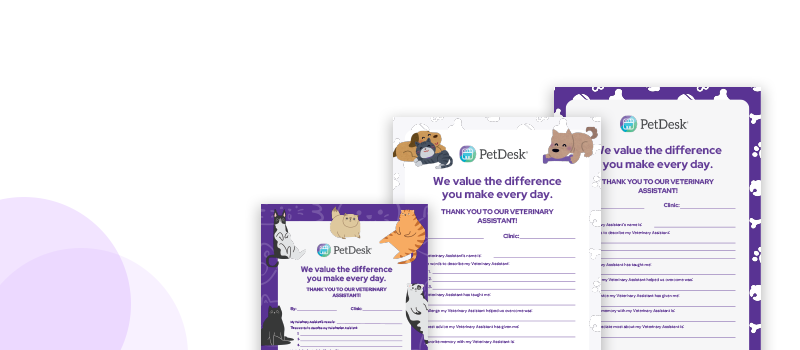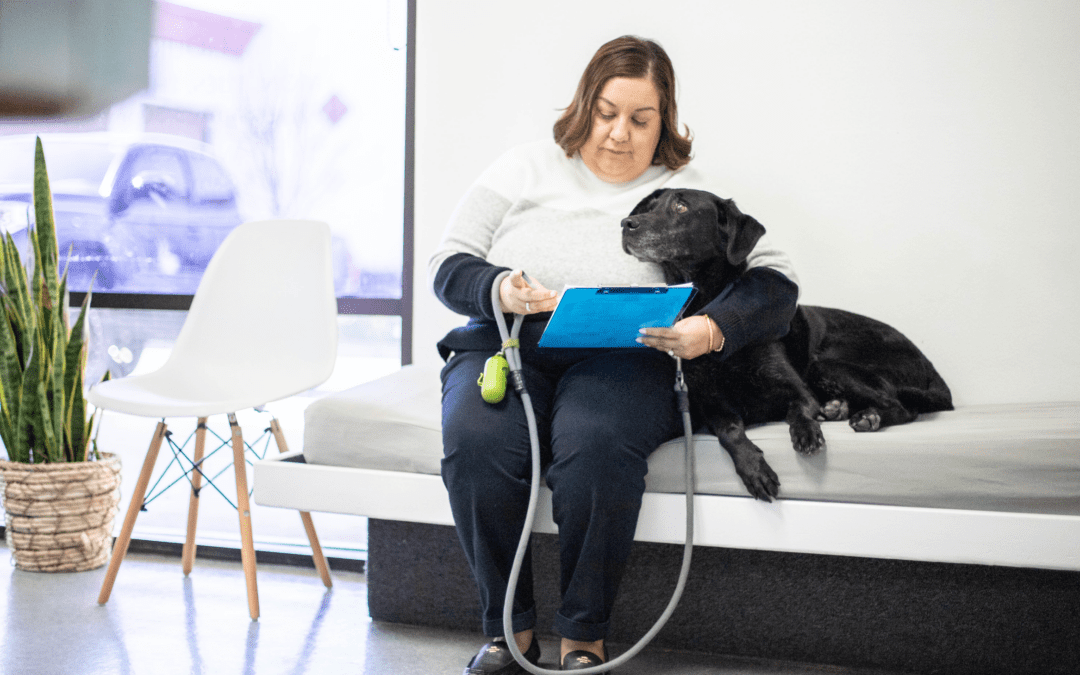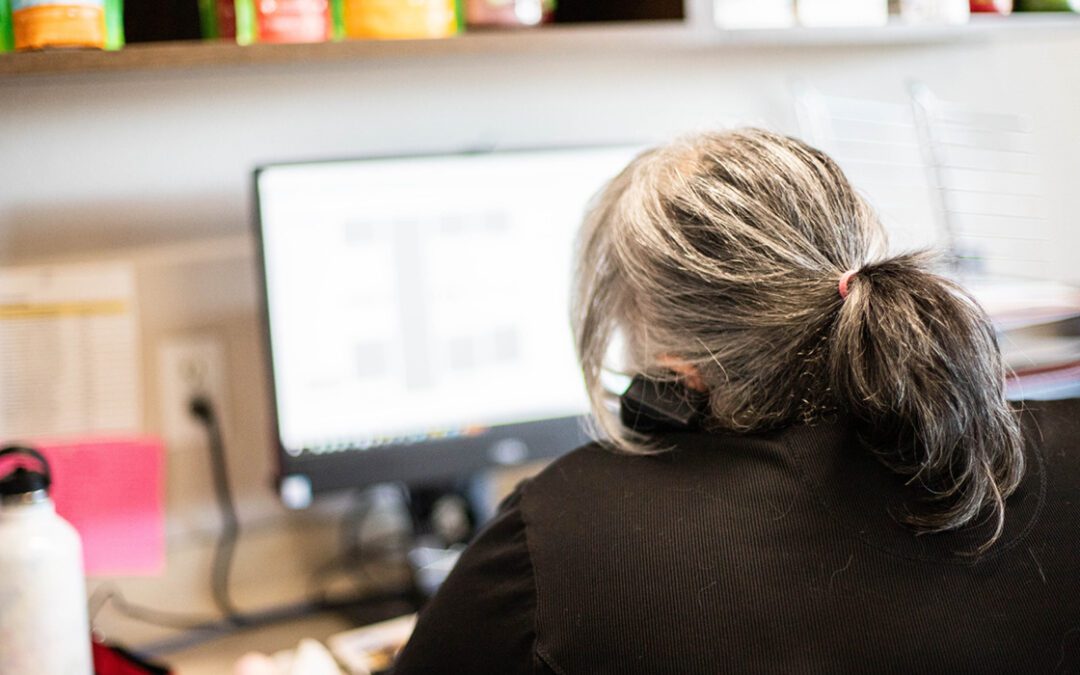Are technicians going to save vet med? I mean, we know they already save the day on a regular basis, but in the weary winter of COVID there’s an additional treasure trove of knowledge to unlock. If you’re struggling to implement new communication methods to help streamline communication because you’ve been overwhelmed with the daily burdens of curbside, it’s time to talk techs.
The intersection of technicians and technology is the sweet spot to get you through the coming days without feeling forced to sacrifice your standard of care, make remote diagnoses, or change how you practice medicine.
The focus on telemedicine in the past six months has caused us to miss the much bigger picture. There is so much more every team member can or should be doing with digital tools beyond trying to figure out how to have a virtual appointment with a client. These tools improve efficiency, allow us to scale care to help more pets, and reduce time wasted in the clinic bouncing messages back and forth. This is why we need to step back and look at the big wide world of virtual care.
Virtual Care is in Your Clinic Today
Telemedicine is the use of electronic communications to facilitate the practice of medicine: making a diagnosis, prescribing a course of treatment, making a prognosis, or anything you need a license to perform. It usually requires a VCPR between the doctor and the client, which is governed by the state practice acts and, to a certain degree, the FDA.
While everyone argues about whether or not it is appropriate for doctors to diagnose condition x, y, or z without a physical exam, only a handful of clinics are really leaning into telemedicine. In the meantime, its related cousin virtual care has quietly assertively, already begun its spectacular ascent.
Virtual care encompasses a breadth of use cases that leverage communication technology to facilitate the care of a patient. In short, anything patient-related that doesn’t happen face to face is virtual care. Emails about Fluffy’s vaccine records. Phone calls about Chloe’s medication refills. You’ve been using virtual care this whole time.
Bottom line: We are in the golden age of virtual care. Here are two key outcomes for clinics implementing virtual care:
- Reduce reliance on the phone. It’s the least efficient means of communication since the fax went out of style and is a major time suck for your front desk staff.
- Keep staff focused on the bigger items by communicating common, repeatable messages more quickly than ever before.
It’s that simple! And techs are the key.
How Techs Help the CSRs
Clinics that have already integrated two-way texting have saved time by moving repetitive tasks like normal fecal test results to this format. But they’re still overwhelmed with incoming calls to schedule appointments, check-in curbside, and requests for advice. In most clinics, calls that can’t be handled by the CSR end up in the “leave a message” bucket, where the CSR still needs to take the time to transcribe the message, determine who gets it and make sure it’s delivered in a timely manner. Often, another call will interrupt the CSR before delivery and the tech or doctor receives a stack of callbacks to go through all at once.
Technology allows us to bypass the phone bottleneck by creating access points to the person who can help without needing to tie up a phone line. No, it’s not going to happen overnight, but it happens faster than you think. Why? Because the client wants to do it. If a client knows that asking for prescription refills using the app or a form on the website results in a confirmation within a couple of hours, versus waiting for a callback in a day or two, that’s a win-win.
How Techs Help the Doctors
Doctors across the country report the same concern when it comes to their time these days: there’s not enough of it. When it comes to the most obvious drag on their time, it’s the callbacks: non-urgent concerns that still require a response, aren’t tied to revenue, and – dependent on the client – can eat up a big chunk of the afternoon. In many clinics, when staff is already overwhelmed with inpatients and appointments, callbacks get pushed to the end of the day, often well after the doctor is technically done for the day.
In addition to the time spent on the phone, all calls need to be documented- another inefficient chunk of time whittled away. The “telephone game” is called that for a reason- each time the message is whispered from one person to the next, a little more context disappears. With asynchronous choices such as messaging, the conversation is preserved in its original form, making it much easier for someone to quickly assess the situation. Conversations that normally get pushed to the end of the day turn into a series of quick responses that can then be reviewed – or even drafted – by the technician, saving valuable CSR time for more efficient client communication.
This has turned out to be especially helpful with triaging cases that may not be emergencies but do need relatively immediate attention and treatment. The extra time allows staff to more thoughtfully fill their calendar in an efficient way. Aggressive dog with an ear infection who usually needs sedation? Put them in early in the day. Same with the vomiting cat who may require radiographs.
At the end of the day, virtual care is less about delivering medicine virtually and more about communicating information using tools like two-way text in the most effective way. It’s about having more conversations with pet owners, in less time. It’s about leaning into the most all-around helpful person who always knows just where to find the medication you need, the file you lost, or the tiny cephalic vein that no one else can find. Turns out they also know how to solve the pain points curbside has created through the power of virtual care tools. Let’s hear it for our techs!
Jessica Vogelsang, DVM – Founder of pawcurious
Dr. Jessica Vogelsang centers her life around two passions: animals and storytelling. She began pawcurious.com in 2009 as a way to connect with animal lovers around the world and has since become one of the most widely read veterinarians on the web. Dr. Vogelsang covers a variety of topics such as animal health, client communication, resilience, and the power of storytelling to create lasting bonds.
See the power of PetDesk for yourself—for free
Save time and grow your business with custom websites and digital marketing, 24/7 error-free booking, a PIMS-VoIP phone system, plus a client engagement platform with a mobile app.










